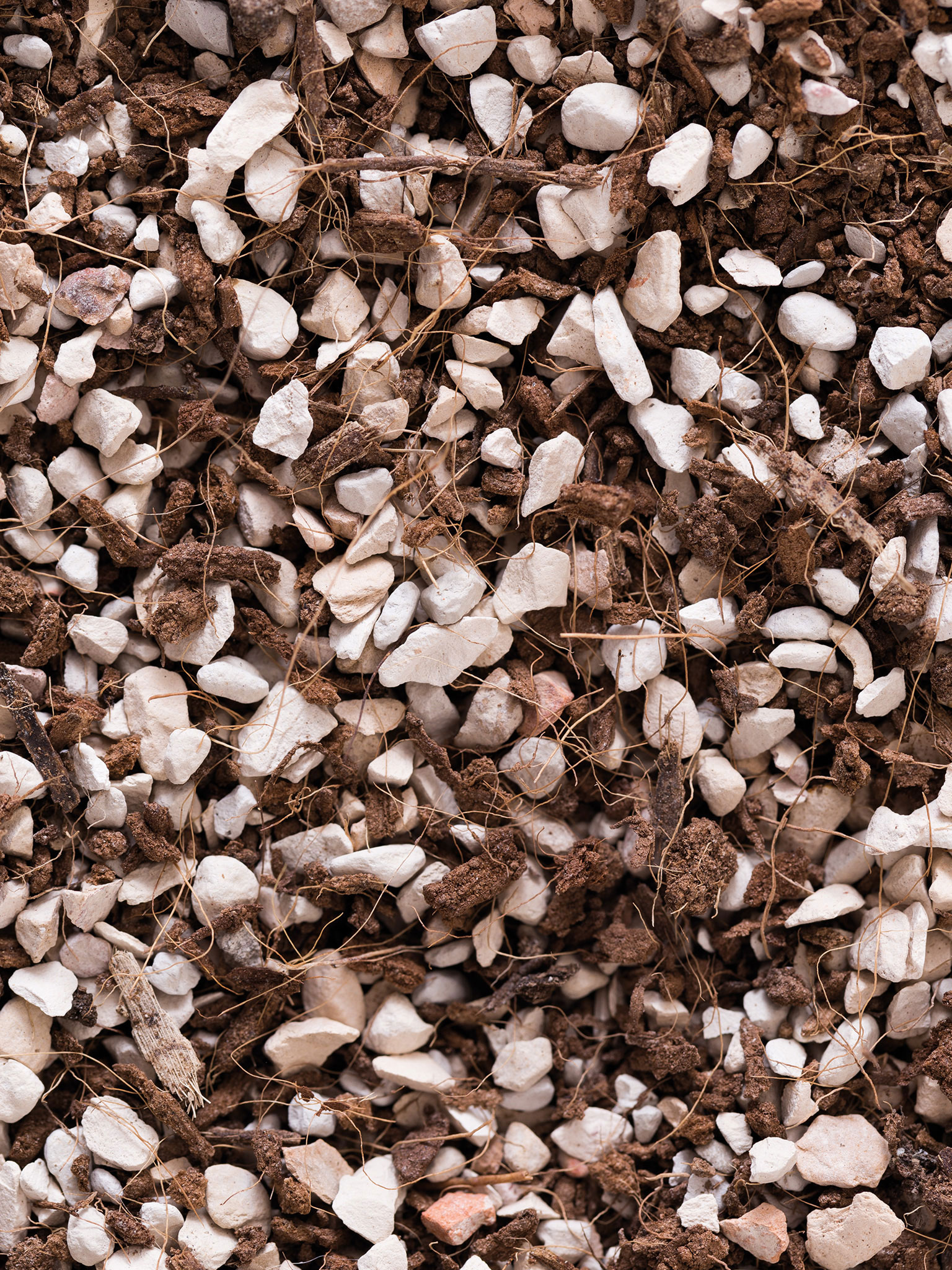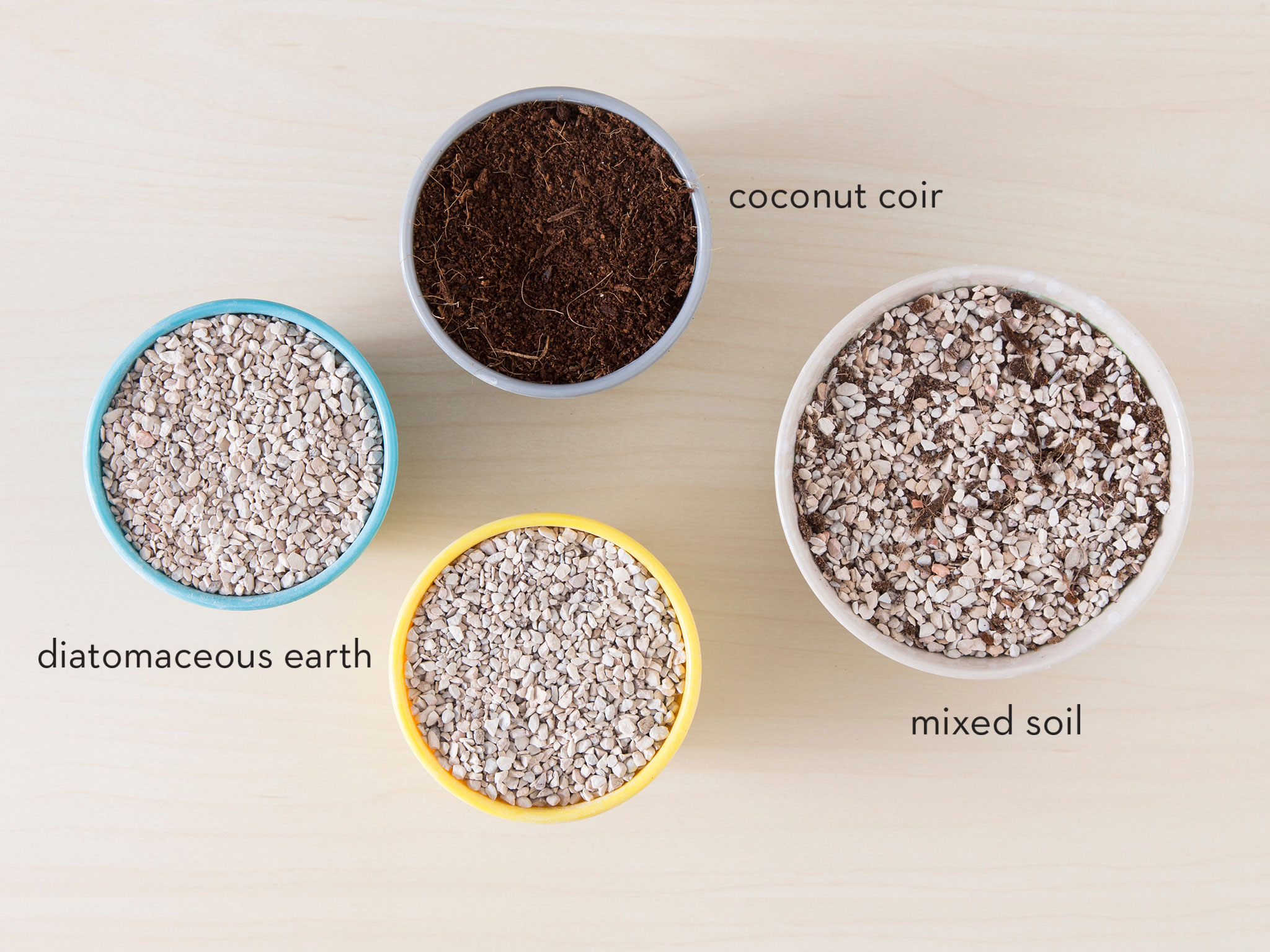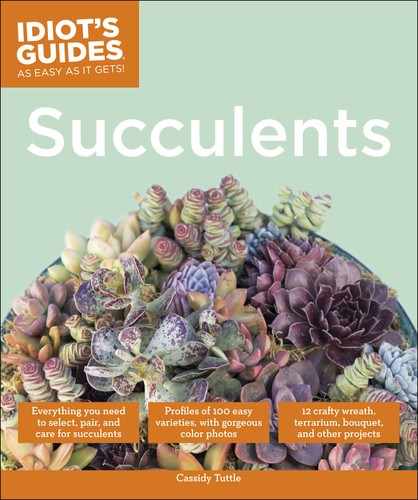The Right Soil
Watering succulents properly won’t do any good if you don’t have the right soil. Most nurseries sell succulents in their standard potting soil, which contains mostly peat moss and doesn’t drain well. Leaving succulents in this type of soil is one of the quickest ways to kill them. The right soil will allow your succulent to be watered properly and avoid root rot.

The best soil for succulents is coarse and well draining.
Ideal Soil Components
Succulents don’t like to sit in wet soil. They like water to drain out quickly, keeping the roots mostly dry. An ideal soil will include both organic and rock components. The organic component provides nutrients for the succulents, and the rock component provides stability and prevents the soil from breaking down completely. Ideally, the soil components will retain water but allow for great drainage. Coconut coir and diatomaceous earth both meet this standard.
Coconut coir comes from the husks of coconuts. It is an organic material that works as a great replacement for peat moss because it retains water but drains well. This prevents the roots of your succulent from sitting in wet soil. The coconut coir also provides some basic nutrients that succulents need to grow.
Diatomaceous earth (DE) is a type of rock that can easily absorb water. It is often used to clean up oil spills. Since it is generally pebble-like in size, it provides great drainage in a soil mixture.

A blend of coconut coir and diatomaceous earth is an ideal soil mix for succulents.
Proportions
For indoor container gardens, combine two parts diatomaceous earth to one part coconut coir. This soil mixture retains enough water that the succulent roots can absorb what they need, but dries out quickly enough that they don’t rot. If you tend to overwater, I’d recommend adding a little more DE than coconut coir. It dries out more quickly so your succulents won’t be as likely to suffer from overwatering. On the flip side, if you tend to under-water, you can add more coconut coir than DE, so your soil stays wet a little longer. If you’re just starting out, begin with two parts DE to one part coconut coir.
Where to Buy Soil Components
Most home improvement stores such as Lowe’s and Home Depot carry coconut coir during the growing season. You can also find it at various online retailers. It’s often sold in a brick that needs to be soaked in water before using.
The easiest place to find diatomaceous earth is at an auto parts store. It will be marked as a product used to clean up oil spills. Kitty litter is also a form of DE, but it tends to have extra chemicals added, so it is not recommended. You can usually find DE at home improvement stores as well.
Premixed Soil
If you’d rather not mix your own soil, find a soil designed for cacti and succulents or bonsai. Look for a soil mixture that has pumice, perlite, or a similar additive to help with drainage. Most premixed soils have quite a bit of peat moss, so you’ll want to make sure the soil has completely dried out before watering again.
There are a lot of suggestions on soil composition for succulents from nurseries, gardeners, and succulent enthusiasts. The coconut coir and diatomaceous earth combination works well for indoor succulent growing. Feel free to experiment with other components in your soil. The most important thing to remember is that the soil needs to be well draining.
